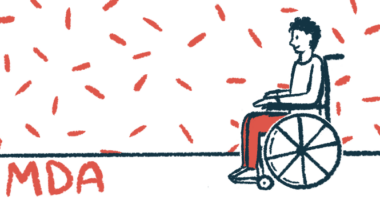Study shows SMA infants with neutropenia can take Zolgensma
Therapy is OK'd for SMN1-mutant SMA, but shouldn't be given with infection

An infant with spinal muscular atrophy (SMA) type 1 and neutropenia was successfully treated with with Zolgensma (onasemnogene abeparvovec-xioi), according to a case report.
Neutropenia, which refers to low levels of immune cells called neutrophils, increases the risk for infections. However, the child “tolerated the treatment well and, despite the neutropenia, he did not develop any severe infection and [his] family felt safe and happy that the therapy could be administered,” wrote the researchers. Spinraza (nusinersen) was added later and helped improve the child’s motor function. The study, “Safety of onasemnogene abeparvovec in an infant with spinal muscular atrophy type 1 and severe neutropenia: a case report and literature review,” was published in Medical Reports.
Mutations in the SMN1 gene usually cause SMA, a progressive neuromuscular disease. The mutations prevent the body from making adequate levels of survival motor neuron (SMN), a protein that supports the nerve cells that control muscles. As these neurons gradually die, muscle weakness and wasting can develop.
Zolgensma is a one-time gene therapy that delivers a working copy of SMN1 to cells to enable more functional SMN to be produced. It’s approved in the U.S. for patients up to age 2 with any type of SMA related to SMN1 mutations, but shouldn’t be administered to anyone with an active infection.
Neutropenia impacts decision on Zolgensma
At 8 months, the boy was diagnosed witth SMA type 1. He didn’t have a family history of neuromuscular or neurodegenerative disorders. When he was 10 months old, his clinical team decided to start Zolgensma.
But blood tests revealed severe neutropenia, which can be related to infection, medication, autoimmune disease, or other conditions. No clear cause was uncovered here, however. leaving two possibilities — the genetic disorder severe congenital neutropenia or chronic benign neutropenia of childhood, which typically resolves on its own.
Based on the boy’s age and his clinical history — he had no severe invasive infections in his first months of life — chronic benign neutropenia was considered the more likely explanation. The boy didn’t show any other warning signs for starting the gene therapy, such as abnormal liver function.
“Despite our initial reservations, and the fact that treatment with Zolgensma had not been previously reported in patients with severe neutrophil abnormalities, we opted to go ahead with the administration of the gene therapy,” the researchers wrote. As recommended, they began administering prednisolone, an immune-suppressing corticosteroid. About a day after Zolgensma was delivered by infusion into a vein, the boy developed a mild increase in temperature, prompting his care team to put him on antibiotics.
During the following six months, his neutropenia persisted and the boy showed elevated liver enzymes in his blood, called transaminesemia, which can indicate liver problems and has been reported with Zolgensma. He continued on prednisolone without any side effects until the transaminasemia resolved. The boy had a mild upper respiratory infection in the subsequent six months.
At 22 months, he had surgery to treat undescended testicles, but before the procedure, he started a medication to temporarily increase his neutrophil counts.
“At approximately 28 months of age, the [absolute neutrophil count] started to gradually increase and has since remained within normal limits,” the researchers wrote. This helped confirm the chronic benign neutropenia of childhood diagnosis.
Spinraza was also started, as the boy’s clinical team deemed his motor function wasn’t developing optimally. Adding that therapy was credited with gradual improvements.
The researchers said the outcomes supported deciding in favor of Zolgensma, despite the neutropenia, but cautioned that more data is needed about the therapy’s safety in those with SMA and severe neutropenia.








